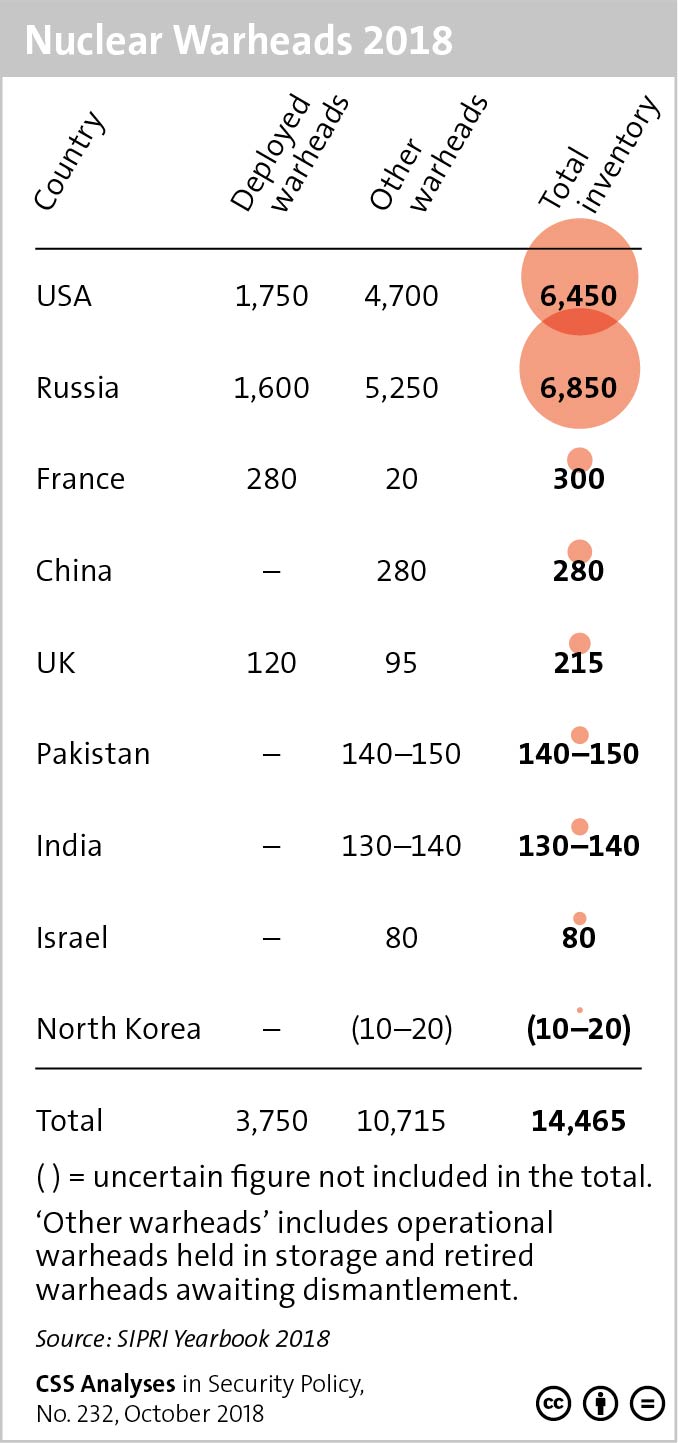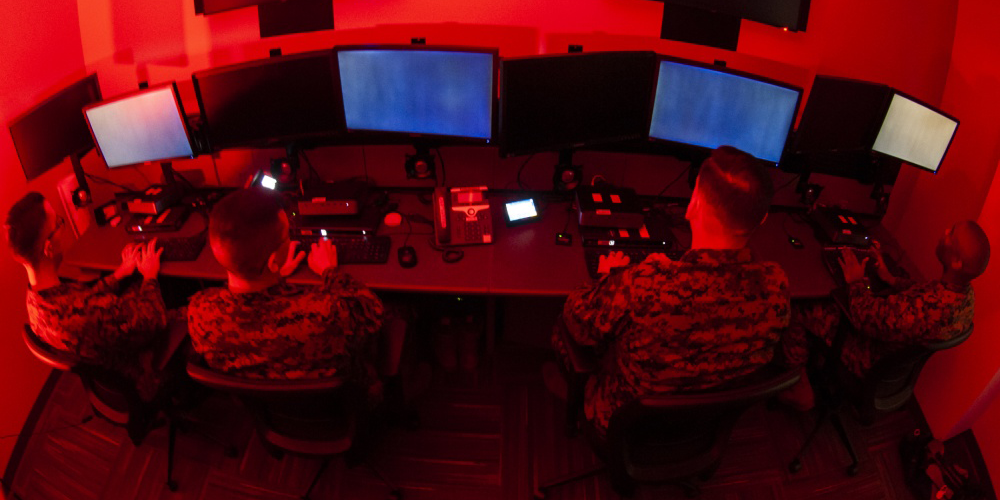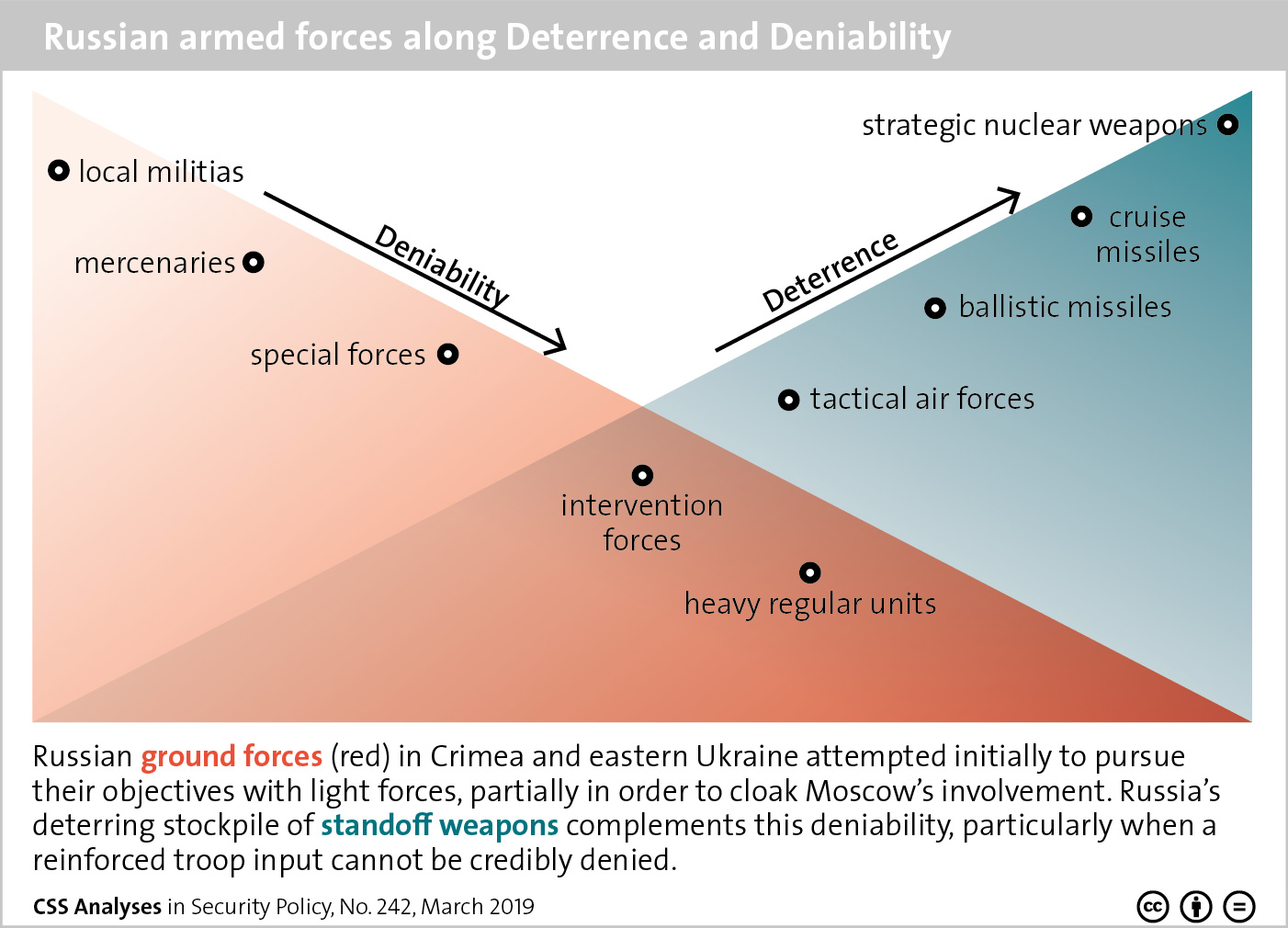
This graphic shows the number of nuclear warheads owned by each country known to have nuclear weapons. For more on trends in nuclear arms control, see Oliver Thränert’s CSS Analyses in Security Policy series here.

This graphic shows the number of nuclear warheads owned by each country known to have nuclear weapons. For more on trends in nuclear arms control, see Oliver Thränert’s CSS Analyses in Security Policy series here.

This article was originally published by the Council on Foreign Relations on 18 February 2020.
Born in the 1990s, the thinking on cyber deterrence was nurtured by the U.S. Department of Defense in numerous war-gaming exercises. Hitting puberty in the aftermath of the distributed denial-of-service campaign against Estonia in 2007, cyber deterrence matured after Stuxnet and received peak attention from policymakers and academics from 2013 to 2016 during the golden age of ‘cyberwar’ scholarship. From 2016 onward, the interest in cyber deterrence started to fade to the extent that it is now intentionally neglected. The figure below captures this short life cycle by quantitatively visualizing the number of articles, book chapters, and research reports written on ‘cyber deterrence’ and ‘cyberdeterrence’ between January 1990 and January 2020.

This graphic maps how Russian armed forces’ capabilities relate to their deniability and the deterrence they provide. It also describes how Russia made use of these capabilities in Crimea and eastern Ukraine. To find out what Western planners and strategists have learned from the war in Ukraine, read Niklas Masuhr’s addition to the CSS Analyses in Security Policy series here.

This article was originally published by the NATO Defense College in February 2019.
A more competitive international environment, and in particular Russia’s assertive policies, have sparked renewed interest in the concept of nuclear deterrence as part of NATO’s approach to security. This has manifested itself in devoting greater attention to Russia’s nuclear policy and posture as well as to NATO’s own nuclear arrangements, and in a stronger emphasis on nuclear deterrence in public statements. However, this renaissance of nuclear deterrence takes place against the backdrop of new developments that seek to challenge the military rationale and moral legitimacy of that very concept. Put differently, just as nuclear deterrence is again becoming more important, it is also becoming more contested.